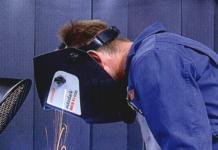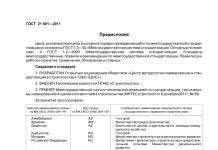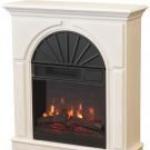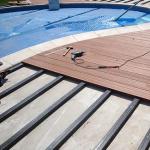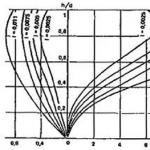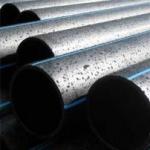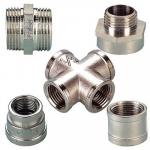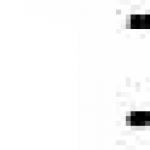The manhole hatch is heavy ( Luke T (S250) K.1-60 ) - this is a manhole body and a cover installed on the opening of manholes for sewerage, water supply and other engineering networks. Heavy hatches are most often used in road and industrial construction. Hatch T (C250) K.1.60 is cast from the most durable cast iron of grade no lower than 110. A heavy hatch is used to protect well shafts on highways with heavy traffic and in industrial zones. The norms and standards for the production of hatches are enshrined in GOST 3634-99.
due to its weight (110) it is impossible to lift and mount without the use of special devices. The need for such a weight is explained by the fact that when using them on roads with heavy traffic, cast-iron sewer manholes must be in a static position, and even a slight shift in the structure threatens the movement of vehicles. The solid mass of the cast-iron hatch guarantees greater stability during operation.
Hatch T (S250) K.1-60 is produced with a diameter of 830mm. The heavy manhole cover type T must withstand a significant load kN.
Hatch T (C250) K.1.60 has a round shape, the body is flat and the cover is flat or convex (so that precipitation does not collect on the surface),
Traditionally, cast-iron manhole covers are made ribbed - thereby achieving greater hatch strength and better grip when driving. The upper surface of the hatch cover T has a relief from 3 to 8 mm high, often the relief takes the form of various patterns. The ribs on the outer surface of the heavy hatch cover T can have both a wavy and a tangential shape.
The cast-iron manhole cover can be attached to the body using one or 2 hinges with a lock, which provides additional protection against unauthorized entry into the well by outsiders. The internal locking devices of the hatch are made of steel grade not lower than St3 with anti-corrosion coating.
Also, the cover of the heavy manhole has a hole for sampling gas contamination (except for plumbing). must have an elastic seal between the lid and the body.
Product marking
On the surface of the hatch cover, parallel to the center line, bounded by an annular rib, the symbol of the hatch, the year of its manufacture and the manufacturer's trademark are cast.
The marking of a heavy type hatch depends on the version, where the design differences of the products are indicated by numbers. The number 1 denotes hatches for general purposes, 2 - the presence of a locking locking device, 3 - the presence of a recess in the structure of the cover for filling with concrete, 4 - the presence of a device for lifting the cover using a standard lifting mechanism, 5 - hatches with reinforced body sealing, 6 - hatches with a two-piece lid, 7 - with a lid hinged to the body, 8 - square or rectangular hatches.
Also on the manhole cover indicate the designation of the engineering network, the well of which the hatch will cover. Name of engineering networks for which the hatch is intended:
- B - plumbing;
- G - fire hydrant;
- K - household and industrial sewerage;
- D - rain sewer.
- TS - heating networks
- GS - gas network
- GTS - urban telephone network.
The symbol of the hatch should consist of the type of hatch, version or several versions, overall dimensions of the hatch in centimeters and the designation of this standard. You can also find markings with other letter designations. This is nothing more than the compliance of domestically produced hatches with European standards. So hatch T corresponds to the class C250; hatch C - class B125, etc.
As an example of a heavy hatch symbol, consider:
- T - hatch type (heavy);
- C250 - compliance with the European standard;
- Letters - the name of the engineering network;
- The first digit is the hatch execution index;
- The second digit is the diameter of the manhole 650mm;
- GOST 3634-99 - an indication of the state standard.
Product quality control
Casting Luke T (C250) K.1.60 should not have significant defects and cracks that could affect the strength of the product. Shells with a diameter of more than 10 mm and a depth of more than 3 mm are not allowed. The lid should fit snugly against the supporting surface of the housing - the gap between the lid and the housing is not more than 3 mm. The deviation of the straightness of the supporting surface should not exceed 2 mm.
On acceptance tests hatches C, the appearance of all covers and hatch bodies, as well as the mechanical strength of the covers (at least 2 hatches from a batch) are controlled.
Technical certificate, which must necessarily accompany a batch of cast-iron hatches, must indicate:
- name or trademark of the manufacturer;
- product marking;
- lot number;
- the number of hatches in the party;
- warranty period of operation;
- stamp and date of acceptance by technical control;
- designation of the state standard.
Transportation and storage.
Heavy hatches are transported by various vehicles packed in bags tied with wire. Luke T (S250) K.1-60 is covered by the manufacturer's warranty. The warranty period is 3 years from the date of putting the hatches into operation, but not more than 5 years from the date of shipment of products to the customer.
Since these designs are the most common, then, accordingly, they are characterized by a large number of advantages, among them:
- They are able to withstand heavy loads.
- The high weight of the devices means that the lid cannot be accidentally opened and will not open during transport.
- Differ in the democratic price.
- Not exposed to external influences.
- High frost resistance.
- Long service life.
- They can be of different sizes and different weights, in accordance with these they solve different problems. There are heavy and light installations. Lungs are used in park areas, squares, on sidewalks, in summer cottages to close septic tanks and drainage wells. Heavy, in turn, are installed on city highways, autobahns, where there is medium and heavy traffic. They can be used both at industrial facilities, and on highways, and in thermal and gas networks.
- The ribbed surface of the cover increases the strength of the structure.
As for the shortcomings, this is, first of all, weight. It contributes to the protection of wells, but at the same time makes it difficult for the possible movement of devices, their lifting. Also, such installations are attractive to thieves, because cast iron products can be rented.
The cast-iron manhole GOST 3634 99 is designed for installation on manholes of underground utilities. The variety of species is associated with operating conditions, resistance to stress and safety. The manufacture of protective products, the requirements for the material are regulated by established international standards.
Types of protective hatches and their purpose
Access to view underground utilities, such as sewage, cable, pipeline systems, is provided by a manhole in the manhole.
The main purpose of the covers is to ensure the safety of pedestrians, cars, as well as protection against damage and clogging of underground networks.
The standard for cast iron manhole covers is based on worldwide requirements for product marking, design, testing and quality control. Hatches are produced in accordance with the requirements of GOST 3634 99 "Hatches for manholes and storm water inlets".
Depending on the installation conditions, loads, different types of hatches are distinguished. They are associated not only with ease of installation and operation, but also with the aesthetic filling of the structure, the preservation of technical parameters, regardless of the conditions of use.
 Super-heavy protective structures with a diameter of 550 mm and a weight of 155 kg, a rated load of 600 kN, are installed in docks and airfields.
Super-heavy protective structures with a diameter of 550 mm and a weight of 155 kg, a rated load of 600 kN, are installed in docks and airfields.
Heavy main hatches weighing about 140 kg are mounted on highways, withstand loads up to 400 kN. On urban roads with heavy traffic, products with a mass of 120 kg and a rated load parameter of 250 kN are installed.
Medium products that can withstand loads up to 125 kN are installed in residential areas and roads with a limited traffic load. Installation of light sewer hatches, weighing 65 kg, is carried out on sidewalks, pedestrian areas, lawns.
Hatches for wells are manufactured in accordance with the requirements of the established standard according to approved drawings. Castings must not contain defects that affect the strength of the product. 
The design provides for the presence of at least one hole, providing the possibility of opening the cover. It must simultaneously fly tightly to the supporting surface and freely enter the housing.
If we characterize the cast-iron hatches of round manholes, then for them there are 2 main parameters - the outer and inner diameter of the hole.
All overall parameters of the product are prescribed in GOST 3634 99, but in practice you can find cast-iron manhole covers with a diameter of 380-810 mm. Full opening size is 450-550 mm.
The cover of the protective structure can also be square. The minimum side length can be 300 mm and can be increased by 50 mm with each step. The optimal dimensions of this design are 800 mm.
Technical specifications
 Cast iron hatches must be equipped with an elastic gasket between the upper and lower parts of the structure. The material from which protective products for manholes are made must meet the requirements of the state standard.
Cast iron hatches must be equipped with an elastic gasket between the upper and lower parts of the structure. The material from which protective products for manholes are made must meet the requirements of the state standard.
Manhole covers, bodies are made of gray cast iron grade SCh20. If necessary, it is allowed to replace the material with another brand, provided that the maximum load is ensured.
The manufacturer puts a marking on the outer part of the hatch design, and the date of manufacture on the inner part. Each product has a passport, which indicates the data on the product, the warranty period of operation, the date of acceptance by the technical control department.
Each batch is tested for strength and tested for mechanical stress.
 The service life of cast-iron hatches is at least 80 years, and the withstand load is up to 90 tons. They are resistant to temperature changes. The only drawback of cast iron structures is their high cost.
The service life of cast-iron hatches is at least 80 years, and the withstand load is up to 90 tons. They are resistant to temperature changes. The only drawback of cast iron structures is their high cost.
The arrangement of a technological well is associated with the need for constant maintenance and current repair of various types of highways. Therefore, such structures are reliable and provide conditions for access to underground utilities.
Installation and operation
 Tightly closed manhole covers do not guarantee complete safety and protection against various objects falling into the hole. The main purpose for which heavy material is used in the manufacture is to prevent accidental falls.
Tightly closed manhole covers do not guarantee complete safety and protection against various objects falling into the hole. The main purpose for which heavy material is used in the manufacture is to prevent accidental falls.
The cast iron cover is quite heavy, so a certain force must be applied to overbalance and shift it. Cast iron is resistant to atmospheric conditions, corrosion, durable, does not crack under the influence of loads.
The manhole cover provides limited access to the manhole, in which the nodes of distribution and shut-off equipment, as well as the mechanisms for monitoring and controlling the systems, are provided.
Well openings must always be closed so that they cannot be opened by random one-sided loads or curious passers-by.
If the installation of the hatch must be done on a personal plot, then the main efforts must be made when installing the supporting part of the structure. The support ring has technological holes necessary for high-quality armoring of the structure.
The cover of the sewer well should rise above the surface if it is placed on the lawn. When installing on a roadway, ensure that there is a minimum slope in the area where the cover will be installed to allow water to drain.
Ease of installation is closely related to strict compliance with the rules of operation. The well cover must be opened with extreme care, especially if it is made of cast iron. The heavy weight of the product may cause injury.
An open well must be ventilated, and all work is allowed to be carried out only with personal protective equipment.
GOST 3634-89
Group G21
STATE STANDARD OF THE UNION OF THE SSR
CAST IRON HATCHES FOR MANHOLES
Specifications
Cast-iron access manhole covers
technical requirements
Introduction date 1989-07-01
INFORMATION DATA
1. DEVELOPED AND INTRODUCED by the State Committee for Architecture and Urban Planning under the Gosstroy of the USSR
PERFORMERS:
Yu.M. Sosner (head of the theme); P.I. Kruglyakova; L.B. Kogan, Doctor of Engineering sciences; A.V. Ostroverkhov, Ph.D. tech. sciences; A.P. Chekrygin; L.S. Vasilyeva
2. APPROVED AND INTRODUCED BY Decree of the State Construction Committee of the USSR dated 04/06/89 No. 62
3. REPLACE GOST 3634-79
4. REFERENCE REGULATIONS AND TECHNICAL DOCUMENTS
Number of paragraph, subparagraph, |
|
GOST 882-75 | |
GOST 1412-85 | |
GOST 2283-79 | |
GOST 6521-72 | |
GOST 7293-85 | |
GOST 7338-77 | |
GOST 9347-74 | |
GOST 14192-77 | |
GOST 21929-76 | |
GOST 23711-79 | |
GOST 26358-84 | |
GOST 26645-85 |
This standard applies to round cast-iron hatches of manholes of water supply and sewerage networks.
1. TECHNICAL REQUIREMENTS
1. TECHNICAL REQUIREMENTS
1.1. Hatches and a repair insert must be manufactured in accordance with the requirements of this standard according to working drawings approved in the prescribed manner.
1.2. Main parameters and dimensions
1.2.1. Types, weight and scope of hatches, depending on the operating conditions, are indicated in the table.
Weight of sunroof parts | ||||||
Name | Application area |
|||||
cor- | roof- | cor- | roof- | |||
Light hatch | In the green area |
|||||
heavy hatch | On citywide cars |
|||||
TM | Heavy | 50 | 45 | 50 | 43 | On main roads |
R | Repair | 35 | In cases of hatches of types T |
|||
1.2.2. The main dimensions of the hatches must correspond to those indicated in Fig. 1-4.
Type L
Crap. 1
1 - cover;
2 - body;
3 - designation of the present
5 - trademark
1.2.3. The symbol of the hatch should consist of a type designation, the name of the engineering network for which it is intended, and the designation of this standard. The name of the engineering networks for which the hatch is intended is denoted: B - water supply; G - fire hydrant; K - household and industrial sewerage; D - rain sewer.
An example of a symbol for a light hatch on a water supply network:
LV GOST 3634-89;
the same, heavy main manhole for rain sewage, version P:
TMD P GOST 3634-89;
the same, a repair insert for hatches of types T and TM for all types of engineering networks:
R GOST 3634-89.
Type T
Crap. 2
1 - cover;
2 - body;
3 - designation of the present
standard and year of issue; 4 - hatch type designation;
5 - trademark
1.3. Characteristics
1.3.1. The configuration of the ribs on the outer surface of hatch covers of types T and TM can have both wavy (version I, drawing 2) and tangential (version P, drawing 3) forms.
1.3.2. It is allowed to make the outer contour of the top of the body of hatches of types L and T to be square, of the same size, with the placement of pockets under the lugs of the cover diagonally.
1.3.3. Manhole bodies of all types, covers and a repair insert are cast from cast iron not lower than grade SCh15 according to GOST 1412.
Hatch covers of type TM are cast from cast iron not lower than grade VCh45 according to GOST 7293.
1.3.4. An elastic gasket is made of rubber with a hardness of at least 40 units. by Shore A.
Staples for fixing the elastic gasket in the groove of the hatch body or repair insert are made from tape 65G-N-1, 0x10 according to GOST 2283. It is allowed to use tapes 0.8-1.2 mm thick of the same brand.
1.3.5. Manhole castings and repair inserts must comply with the requirements of GOST 26358.
On the surface of the castings, shells with a diameter of not more than 10 mm and a depth of not more than 3 mm are allowed, occupying no more than 5% of the surface of the castings. On the lower supporting surface of hatch bodies, when pouring them into an open mold, slag inclusions and bays are allowed, occupying no more than 10% of the total surface area.
Type TM
Crap. 3
1 - cover;
2 - body;
3 - elastic gasket; 4 - bracket;
5 - the designation of this standard and the year of issue;
6 - hatch type designation; 7 - trademark
1.3.6. Tolerances of hatch castings and a repair insert must correspond to: masses - the 11th accuracy class, dimensions - the 10th accuracy class according to GOST 26645, except for those indicated on the drawings.
1.3.7. The manhole covers must fit snugly against the supporting surface of the hull.
The flatness tolerance of the supporting surface of the hatch covers, as well as the corresponding surfaces of the body and the repair insert, should not be more than 2 mm.
1.3.8. In the cover of manholes, except for water ones, a hole must be made for sampling the gas contamination of wells.
1.3.9. When tested for mechanical strength, hatch covers must withstand the force: type L - 30 kN (3 tf), type T - 150 kN (15 tf), type TM - 250 kN (25 tf).
1.4. Completeness
1.4.1. Hatches should be supplied complete.
The kit includes:
case -1 pc.;
cover -1 piece;
passport - 1 copy. (for a batch of hatches).
The composition of the TM type kit, in addition to the specified one, includes, pcs.:
elastic gasket - 1;
bracket - 5.
1.4.2. The repair insert is made by additional order.
The repair insert kit includes, pcs.:
building 1;
elastic gasket - 1;
bracket - 5.
Type R
Crap. 4
1 - body; 2 - elastic gasket; 3 - bracket
1.5. Marking
1.5.1. On the upper flat surface of the hatch cover, bounded by an annular rib, the symbol of the hatch, the year of manufacture and the trademark of the manufacturer should be cast. In this case, the name of the hatch type and the engineering network should be placed along the center line connecting the ears.
1.5.2. The letters on the hatch cover indicating the name of the engineering network must have dimensions, mm:
height - for hatches of types T and TM - 140±10, type L - 80±10
width - for hatches of types T and TM - 100 ± 10, "L - 50 ± 10
The thickness of the lines of the letters must be at least 15 mm. The dimensions of the remaining markings are set by the manufacturers.
1.5.3. Transport marking should be carried out with indelible paint in accordance with the requirements of GOST 14192 on plywood labels attached with a wire with a diameter of at least 1 mm to each package (package).
1.6. Package
1.6.1. Packing of hatches is carried out in accordance with GOST 21929.
1.6.2. Packages are formed separately from hulls and manhole covers, placed in a horizontal position on two wooden beams. Each package consists of 10 hulls or 10 manhole covers. Schemes, sizes and masses of packages are indicated in the appendix.
Package sizes can be reduced by agreement with the consumer.
Strapping of hatch bodies is carried out in four places through their central hole, hatch covers - with the capture of the ears.
For the formation of packages, steel wire with a diameter of 6-8 mm is used. GOST 3282. The ends of the wire are twisted.
2. ACCEPTANCE
2.1. Hatches are accepted in batches. The volume of the batch is equal to the replacement production of hatches from one heat.
2.2. Hatches should be subjected to acceptance and periodic tests.
2.3. During acceptance tests, it is necessary to check the appearance of covers, housings and hatch repair inserts and the mechanical strength of covers. Each hatch is subjected to an external appearance check, and only hatch covers in the amount of 3%, but not less than two hatches from a batch, are tested for mechanical strength.
2.4. In case of unsatisfactory results of the check during acceptance tests for at least one of the indicators, a second check is carried out for this indicator of the double number of hatches. The results of the re-inspection apply to the entire lot and are final.
2.5. During periodic tests, the dimensions, weight of hatch parts, deviations from the flatness of the cover are checked on at least three hatches that have passed acceptance tests, at least twice a year, and also after each replacement of technological equipment.
2.6. The user has the right to conduct a control check of the compliance of hatches with any requirement of this standard, observing the given sampling procedures and control methods.
2.7. Hatches shipped to the consumer are accompanied by a passport, which indicates:
name of the ministry or department of the manufacturer;
name or trademark of the manufacturer;
symbolic designation of the product;
lot number;
number of products;
warranty period of operation;
stamp and date of acceptance by technical control;
designation of this standard.
3. CONTROL METHODS
3.1. The dimensions of covers, housings and other parts of hatches are checked with a universal and special measuring tool, as well as templates.
3.2. The hardness of rubber according to Shore A is determined by the device according to GOST 263.
3.3. The mass of covers, hatch bodies and repair inserts is checked separately on a commodity scale with a weighing limit of not more than 500 kg in accordance with GOST 23711.
3.4. The deviation from the flatness of the supporting surface of the hatch covers, the corresponding surfaces of the body and the repair insert is checked with a set of probes in accordance with GOST 882.
3.5. The test of the manhole cover for mechanical strength is carried out on a press that provides the necessary forces and is equipped with a pressure gauge of accuracy class 0.4 according to GOST 6521. The press must be equipped with a steel punch with a diameter of 200 mm, the lower edge of the punch must have a radius of curvature of 10 mm.
3.6. For testing, the manhole cover is installed on the press bed, which has a hole with a diameter of 500-600 mm.
Between the punch and the hatch cover, a layer of cardboard is laid in accordance with GOST 9347 or rubber in accordance with GOST 7338 with a thickness of not more than 3.0 mm.
The press force is increased evenly to the specified one and the lid is held under this force for at least 30 s.
The hatch cover is considered to have passed the strength test if no damage is found.
Caps that have passed the test are allowed to be supplied to the consumer.
4. TRANSPORT AND STORAGE
4.1. Hatches are transported by any kind of open or closed vehicles.
4.2. Transportation of hatches by road is carried out in accordance with the rules for the carriage of goods in force on vehicles.
When transported by road, hatches can not be packaged, while loading must be uniform and exclude the possibility of cargo movement.
4.3. When hatches are transported by rail in covered wagons or on platforms, wagon shipment should be carried out with the maximum use of their capacity and carrying capacity.
4.4. Hatches storage conditions - for group Zh1 GOST 15150.
5. INSTRUCTIONS FOR USE
5.1. The hatch body is installed horizontally on a prepared concrete base or brickwork and concreted.
The top of the hatch body during installation must coincide with the level of the roadbed.
5.2. Hatches on the carriageway of the streets are installed with ears along the main direction of traffic. In this case, the names of the hatch type and engineering network should be located towards the moving transport.
5.3. When building up the roadway, a repair insert should be used.
6. MANUFACTURER WARRANTY
6.1. The manufacturer guarantees that hatches comply with the requirements of this standard subject to the conditions of transportation, storage and operation.
6.2. Warranty period of operation - three years from the date of putting the hatches into operation, but not more than five years from the date of shipment of products by the manufacturer.
1 - strapping;
2 - slinging place
Package weight, kg |
|||||||
The text of the document is verified by:
official publication
M.: CITP Gosstroy USSR, 1989
